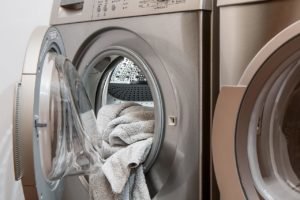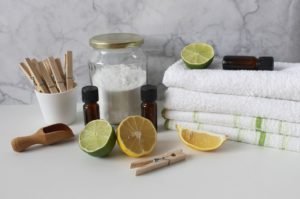There’s no doubt about it, laundry can be a chore to clean. So in this article, we’ll share 9 laundry hacks that you can use to make laundry last longer and pollute less. 9 Laundry Hacks That’ll Save You Money and Time.1. Prevent Clothes from Getting Dirty Quickly: Invest in a Dryer Sheets
A dryer sheet is an essential in the laundry routine. It prevents clothes from getting dirty quickly through two ways. First, it prevents static electricity. Static charges on the clothes can cause it to be ruined easily if the clothes are washed with other clothes or dryer sheets with different chemical composition. So by using one dryer sheet to use with each load of laundry, it will prevent your clothing from being ruined by static electricity. The second way that a dryer sheet saves you time is that it helps reduce wrinkles on your clothing without compromising its durability.
If you use a dryer sheet with your clothes, then when you put them in the dryer, you will not have to use as much heat as if you had not used a dryer sheet.As mentioned above, most people are unaware of the benefits and uses of laundry detergent. However, by using a quality laundry detergent that is effective yet gentle on fabrics, you can be sure that your clothing will look great after each wash.
Another thing to consider before deciding on what type of laundry soap to use is whether or not it’s biodegradable. If your family has pets and children, this is something to keep in mind because detergents containing chlorine bleach often contain toxic compounds that are harmful to humans and animals alike. Plus,
9 Tricks To Make Laundry Last Longer
Laundry can be a pain in the butt, but it doesn’t have to be! Here are nine tricks to make your laundry last longer and reduce the amount of pollution that is created.
1. Pre-wash your clothes. This will remove any dirt, dust, or oils from your clothes before you even start washing them.
2. Use biodegradable detergents. This will help to reduce the amount of chemicals that are used in the laundering process.
3. Use cold water. Warm water washes away dirt and bacteria more quickly, so use cold water when possible.
4. Do not over-fill the washer and dryer. Overloading your machines can cause them to break down faster and produce more pollution.
5. Hang your clothes outside to dry. This will help to reduce the amount of air pollution that is created when clothes are dried indoors.
6. Use high-efficiency machines. These machines use less energy than traditional machines, which helps to save money and protect the environment.

7. Check your machine often for broken parts and repairs. If you notice any broken parts, replace them as soon as possible to avoid further damage and to prevent leaks and damage to surrounding areas.
8. Do not fill your washing machine with more than a quarter full of clothes and accessories. If you do, the washing machine will use more water and energy, which can increase your bills.
9. Avoid using fabric softeners, bleach or other harsh chemicals on your clothes while they are in the washer or dryer. These products strip the natural oils from clothing, causing them to wear out faster when washed several times in a row.10. Wash all colors together at all times as many chemicals can stain different colors, not just whites or blacks: Deep grooves on some clothes may cause stains that disappear when you wash sheets, towels and other items that are light colored…
You might be surprised at the number of stains that you could be unknowingly causing with your laundry care product choices. No matter what kind of stain is on your clothes, using a stain remover or stain removing solution can help remove it quickly and easily. Most stain removers are inexpensive, so it makes sense to use them on everything from your carpet to your favorite pair of jeans.
Stain Remover Tips:
1. While some residue may remain after removal, this will be less apparent than damage from the chemical used in the removal process itself.2. For super-detergent stains try using a natural cleaner like Fairy Liquid and hand wash for 10 minutes before using a normal washing machine setting (this may not always work).3. For best results bleach should only
Alternatives to Laundry Cleaners
 One of the most common ways to reduce pollution is to avoid using laundry detergent. There are many alternatives to laundry cleaners that can be just as effective and much less harmful to the environment.
One of the most common ways to reduce pollution is to avoid using laundry detergent. There are many alternatives to laundry cleaners that can be just as effective and much less harmful to the environment.
One option is to use washing soda instead of detergent. This is a natural substance that can be found in most homes and can be used as a substitute for detergent. Washing soda is heavier than water, which helps it to remove dirt and stains from clothes. It also contains acids that break down organic material, so it is effective at cleaning fabrics without causing damage.
Another option is to use vinegar in place of laundry detergent. Vinegar is a natural substance that can be found in most homes. It has many properties that make it an effective cleaner, including being antibacterial and acidic. Vinegar also breaks down grease and oil, so it can help remove dirt and stains from clothes.
Finally, there are plant-based detergents that are alternatives to traditional laundry detergents. Some plant-based detergents are made from oils or butters, which make them liquid rather than solid like traditional laundry detergent packets. These liquids easily dissolve stains and dirt, so they are great for removing gre
How To Use Laundry Detergent Properly
One of the simplest ways to save money and reduce pollution is to use laundry detergent correctly. Here are some tips to help you do just that:
1. Use the right amount of detergent. Too much detergent will not work and will actually cause your clothes to become sudsy and heavy. Use 1/2 cup of detergent for every load of laundry, unless you are using a small load cycle. In that case, use 1 cup.
 2. Do not overload the washer. Overloading the washer can cause it to break down and washer fluid can leak, which will pollute the environment. Fill the wash machine about two-thirds full with water and add your detergent.
2. Do not overload the washer. Overloading the washer can cause it to break down and washer fluid can leak, which will pollute the environment. Fill the wash machine about two-thirds full with water and add your detergent.
3. Dishes should be washed in cold water. Hot water can damage delicate dishes and may also rust metal items in the dishwasher. Cold water will also minimize fading of colors in fabrics.
4. Don’t put softeners or bleach in the washer! These chemicals may cause damage to your clothes and may also pollute the environment.
5. Over-drying laundry can cause clothes to weaken and garments to stretch out. Follow the manufacturer’s instructions for drying times and do not use excessive heat or dryers that can damage clothing.
6. Your appliance usually has a drain stopper to prevent water from flowing out of the machine onto your floor when it is running. If you have an old washing machine, this drain may be plugged up with lint or other debris that needs to be removed before you attempt to make repairs to your appliance.
7. Use detergent in cold water only. Hot water can damage delicate materials like silk and woolens, while cool water keeps colors bright.
How Much Detergent Do You Need For A Wash?
One of the biggest challenges in trying to save energy and reduce pollution is understanding how much detergent you need for a wash. Here are some tips to help you out:
 When you are determining how much detergent to use, it is important to consider the type of load your clothes are being washed with. For example, if you have delicate clothes that need special care, you may need to use more detergent than if your clothes are just dirty.
When you are determining how much detergent to use, it is important to consider the type of load your clothes are being washed with. For example, if you have delicate clothes that need special care, you may need to use more detergent than if your clothes are just dirty.
It is also important to choose the right washing machines.
Finally, make sure to dry your clothes as quickly as possible after they come out of the washer. This will help reduce energy usage and pollution from the dryer.
If you are out at a restaurant and need to get home before dark and would like to use the public transportation, there is a good chance that you may not have time to wait for buses or trains. In such cases, it is best to rent a car and drive your own vehicle home. This will help you avoid being late while keeping yourself safe.
When driving in lots of traffic, it is very easy to lose track of time when changing lanes. One thing to consider when selecting the right car for this situation is that it should be easy enough for one person to drive comfortably on roadways with heavy traffic during rush hour.
The same goes for parking in places where there are a lot of vehicles in an area.
When choosing a car that is right for your needs, it is important to consider the size of the vehicle before buying one. For example, those who need to take a car on road trips that are more than 50 miles in either direction will want a car intended for truck usage if they are planning to drive their own vehicle home at the end of the trip. This will ensure that they can make their way home without incurring high fuel costs or damage to their engines from sitting idle for too long.
How Long Should you Wait Before Drying Your Clothes?
 It can be hard to get your clothes clean and free of dirt and dust – especially if you’re short on time. But by following a few simple tips, you can make your laundry routine more efficient and help to reduce pollution in the process.
It can be hard to get your clothes clean and free of dirt and dust – especially if you’re short on time. But by following a few simple tips, you can make your laundry routine more efficient and help to reduce pollution in the process.
When it comes to washing clothes, the most important thing is to wait until the clothes are completely dry before putting them away in the closet or drawer. This will minimize the amount of water that is used and help to prevent clothes from becoming mildewed or stained.
If you do have to wash clothes quickly, try to choose less-dense fabrics. These types of clothes will soak up less water and will therefore take longer to dry. And if you need to dry your clothes quickly in a dryer, avoid using heavy loads. This will help to reduce air pollution and save you time and energy.
Conclusion
As a busy mom, it’s hard to find the time to do laundry regularly. But with a bit of effort, you can make your clothes last much longer and reduce the amount of harmful chemicals that you are putting into your home. Here are four tips to help you out:
1) Pre-wash everything – This might seem like a no-brainer, but often times we forget to wash our clothes before we wear them. This will help remove any dirt and soil from the fabric, which will cut down on the amount of cleaning products that you need to use.
2) Air dry your clothes – This is by far one of the most effective ways to reduce the amount of drying time needed for your clothes. By airing your clothes out instead of using heat or air conditioning, you are reducing not only the energy used in drying your clothing, but also reducing environmental pollutants released as a result.
 3) Use natural detergents – If you don’t have access to a laundry detergent that is all natural, you can use a mixture of one tablespoon of borax to one tablespoon of washing soda. Borax is a naturally occurring mineral that can be found in many fruits and vegetables, while washing soda is typically used as an acidic ingredient in cleaning products such as drain cleaners. These two ingredients work together in the same way that baking soda does to help get rid of stains and odors from your clothing.
3) Use natural detergents – If you don’t have access to a laundry detergent that is all natural, you can use a mixture of one tablespoon of borax to one tablespoon of washing soda. Borax is a naturally occurring mineral that can be found in many fruits and vegetables, while washing soda is typically used as an acidic ingredient in cleaning products such as drain cleaners. These two ingredients work together in the same way that baking soda does to help get rid of stains and odors from your clothing.
4) Iron your clothes before wearing them – If the item you are about to wear has been “topped†with ironing (you placed it on a shirt or pants press), then ironing your clothing prior to wearing it will help remove wrinkles and creases from your fabric.
 5 ) Avoid holding your breath when folding – By breathing in through your nose while folding your clothes, you can avoid wrinkles and creases. This is because holding your breath will cause your face to expand, which in turn causes wrinkles on the surface of the clothes.
5 ) Avoid holding your breath when folding – By breathing in through your nose while folding your clothes, you can avoid wrinkles and creases. This is because holding your breath will cause your face to expand, which in turn causes wrinkles on the surface of the clothes.
6) Allow the iron to steam up – In order to remove wrinkles from fabrics, steam is a necessity with an ironing board and iron. This can be achieved by placing the iron on its highest heat setting, positioning the board properly, and then filling the entire space with steam. Be sure that there is no direct exposure of skin while steaming as this will cause irritation; simply cover everything in a wad of paper towels and allow steam to escape through the sides.
